Past Talks
Cultural Date Parsing in Ruby - December 4, 2014
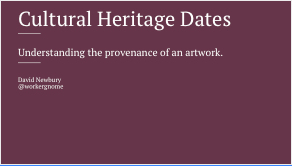
This talk was given to the PGHRB meetup group in December of 2014. It was a discussion of the work in progress on Art Tracks, with an emphasis on how the Ruby programming language handles dates, and the complexities that dealing with the sorts of dates that cultural institutions have to deal with.
Alcohol House Talk: Art Tracks - January 14, 2015
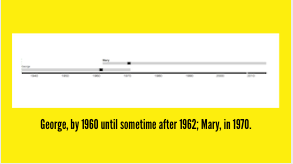
Given at the Carnegie Museum of Natural History's historic Alcohol House with Tracey Berg-Fulton, this presentation was an discussion of our work on the Art Tracks project to-date. It was part of an internal series of presentations on innovation within the Carnegie Museums.
Introduction to Git - January 15, 2015
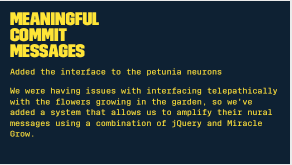
The first of a series of lectures and workshops for Golan Levin's Interactive Art & Computational Design course, this talk was a rapid introduction to Git and version control.
Open Pittsburgh: Art Tracks - January 21, 2015
This talk was given as part of Open Pittsburgh's lecture series. The evening was focused on the use of open data in the arts, and I was fortunate enough to give a talk with my collegue Tracey Berg-Fulton on the work that we've been doing on Art Tracks.
Introduction to OpenFrameworks - January 29, 2015
The second of the lectures for Golan Levin's Interactive Art & Computational Design course, this workshop was an introduction to OpenFrameworks, and focused mostly on how to install and get the software working.
Data Visualization Workshop - Febuary 19 & 24, 2015
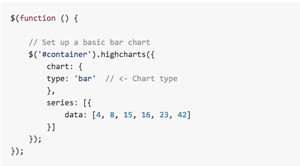
This workshop was given twice — once for Golan Levin's Interactive Art & Computational Design course, and again for Eddy Man Kim's Architecture studio course. It worked through three different visualizations, each built with p5.js, d3.js, and Highcharts.
Dynamic Websites for Artists - Febuary 21, 2015
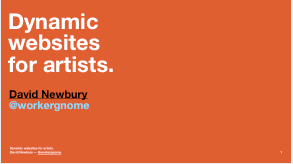
This workshop, given at CMU as part of Golan Levin's Interactive Art & Computational Design course, this public workshop demonstrated an end-to-end workflow for creating a simple database-driven dynamic website (using the Heroku cloud application platform) which collects and displays visitor data.
This was a workshop for building quick-and-dirty dynamic websites, intended for culture-jammers with funny ideas. Tit covered how to build and host a basic website that can accept user data, savesit, manipulate it, and display it back. The workshop covered the basics of using Sinatra, Redis, and Heroku.
Brown Bag: Art Tracks - Febuary 25, 2015
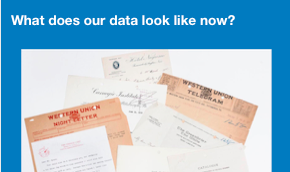
This was another internal presentation to Carnegie Museum staff about the research and progress made on the Art Tracks project.
Art Tracks Colloquium: Pitt - March 4, 2015
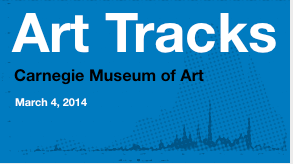
This colloquium, given as part of the University of Pittsburgh's History of Art & Architecture program, discussed how the CMOA Art Tracks project is addressing the problems of provenance, what data we’re finding and hope to find. It also facilitated a discussion about the possibilities of museum data, both inside and outside the Carnegie Museums.
Upcoming Talks:
Behind the Scenes: Gulf Tower - March 21, 2015
As part of the buildup for the Antoine Catala: Distant Feel exhibition, the Carnegie Museum of Art turned the Gulf Tower beacon into a mood ring for Pittsburgh. For three nights the tower displayed the average mood of the city as determined by Pittsburgh's Instagram activity. Tens of thousands of photos were analyzed and turned into an interactive light show visible throughout the city.
As the lead developer on the project, David helped take the Museum's idea and turn it into reality. He'll discuss the technology and process behind the Gulf Tower project and tell behind-the-scenes stories. He'll also talk about lessons learned and mistakes made while discovering how to build projects that take technology out of the computer and into the real world.
Museums & the Web - April 11, 2015
The Carnegie Museum of Art is attempting to structure provenance data so curators, scholars, and software developers can create visualizations that answer questions that would be difficult or impossible to answer without computer assistance. Provenance, the written description of the history of ownership and custody of art, is typically written as a list of the periods, places, and owners of an artwork. It captures the current best understanding of this history in a succinct and precise manner, and illustrates the gaps and uncertainties that still remain. Provenance is typically written as semi-structured text, following an institution-defined format. It would be useful to have a structured, computer-readable format for this data, allowing for search, visualization, and aggregated research.